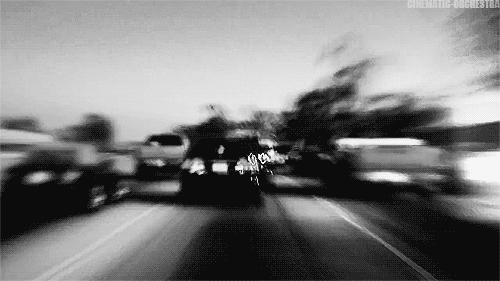Prophecies can fulfill themselves, which is the hope of Angelenos as nation’s largest city hopes to remake itself as something like an ecotopia despite it’s ever-growing population and density of automobiles. Before the middle of last century, locals began to have their streetcars and trolleys taken away, hearing relentlessly that L.A. was a car city, and it had to be that way. It didn’t have to be that way then and doesn’t need to (completely) be that way now. But first hearts and minds must be won, and many projects successfully completed. From Rebecca Tuhus-Dubrow at Slate:
In recent years, Los Angeles has made headway on its most infamous environmental problems, and is even trying to position itself as a green leader. Smog has greatly diminished. Despite adding 1 million people to its population, the city claims to use the same amount of water as it did 30 years ago. Los Angeles is also heavily investing in mass transit while growing denser. (An EPA report found that between 2005 and 2009, the metropolitan area grew significantly more compact, as two-thirds of new housing was built on already developed land.) And Mayor Eric Garcetti’s new sustainability “pLAn” could have been drafted by Al Gore. It lays out a comprehensive suite of goals, such as eliminating coal from the city’s energy portfolio and diverting 90 percent of waste from landfills, both by 2025. In short, a place long known for its suburban character is becoming more of a city. And a place known for defying natural limitations is beginning to try to honor them—a goal that’s at once humbler and more ambitious.
Readers outside the region may have already seen an article or two about how this or that aspect of L.A. isn’t so terrible anymore. Within the region, these changes have collectively contributed to a sense of a new and improved L.A.—an emerging mythology of a more sustainable, responsible, and communal city. Granted, it’s a myth in more than one sense. To apply those adjectives to L.A. requires some squinting (and perhaps politely ignoring the Lexus that just cut you off on the 405). And the drought has the potential to pit water-consumers against each other rather than pulling them together. But this narrative could nevertheless reshape the city’s self-image. Indeed, outsiders who cling to the old clichés about L.A. have themselves become a target of ridicule. As the real-estate blog Curbed LA put it, “New York Times stories about Los Angeles are amazing because they’re like seeing the city through the eyes of a dorky time traveler from 1992.”
The most explicit attempt to capture the shift in the zeitgeist is the notion of the “Third Los Angeles,” a term coined by Los Angeles Times architecture critic Christopher Hawthorne. In an ongoing series of public events, Hawthorne has proposed that L.A. is moving into a new phase of its civic life. In his formulation, the first Los Angeles, a semi-forgotten prewar city, boasted a streetcar, active street life, and cutting-edge architecture. The second Los Angeles is the familiar auto-dystopia that resulted from the nearly bacterial postwar growth of subdivisions and the construction of the freeway system. Now, Hawthorne argues, this third and latest phase harks in some ways back to the first, in its embrace of public transit and public space (notably the billion-dollar revitalization of the concrete-covered Los Angeles River). Hawthorne’s focus is not specifically environmental. But a more publicly oriented city also tends to be a greener one. This is partly because mass transit and walking mean lower carbon emissions. And more broadly, willingness to invest in the public realm tends to coincide with political decisions that prioritize the public good, including ecological sustainability.
Any great city has its own mythologies. But perhaps in Los Angeles, as in California generally, myths loom particularly large.•
Tags: Christopher Hawthorne, Eric Garcetti, Rebecca Tuhus-Dubrow

